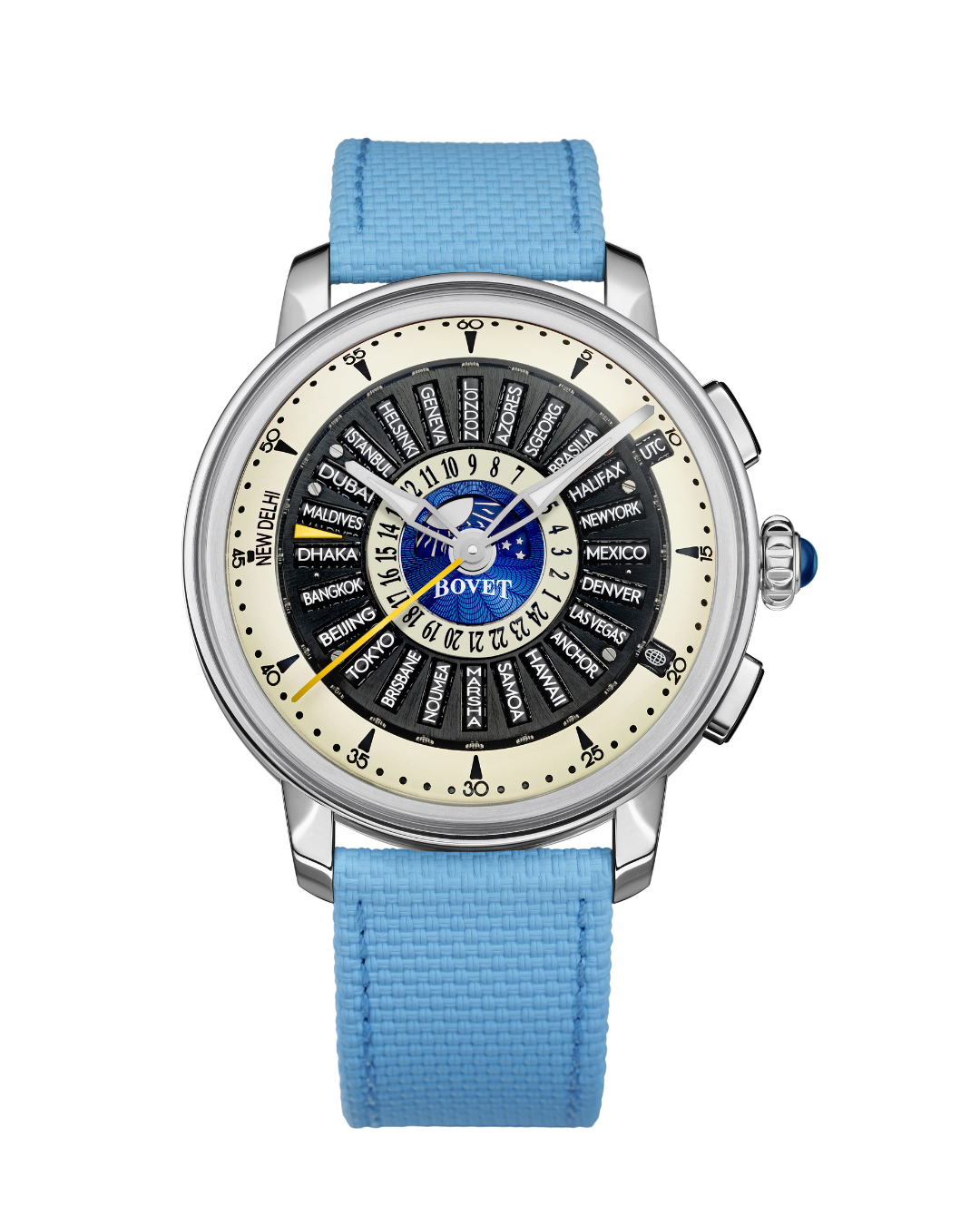As a frequent traveller, I cannot think of a watch complication as useful as a world timer or dual-time watch, which can show the time anywhere in the world or, when you are travelling, the hour at home. Complications are extra functions which invariably add considerably to the price and beauty of the piece, but not often to your lifestyle because of the complications (they are well-named) of setting them.
The World Time Watches Keeping Jetsetters on Schedule
3rd November 2025
Over-complex world time watches are being cleverly simplified to make user-friendly luxury models for globetrotters flitting through time zones.
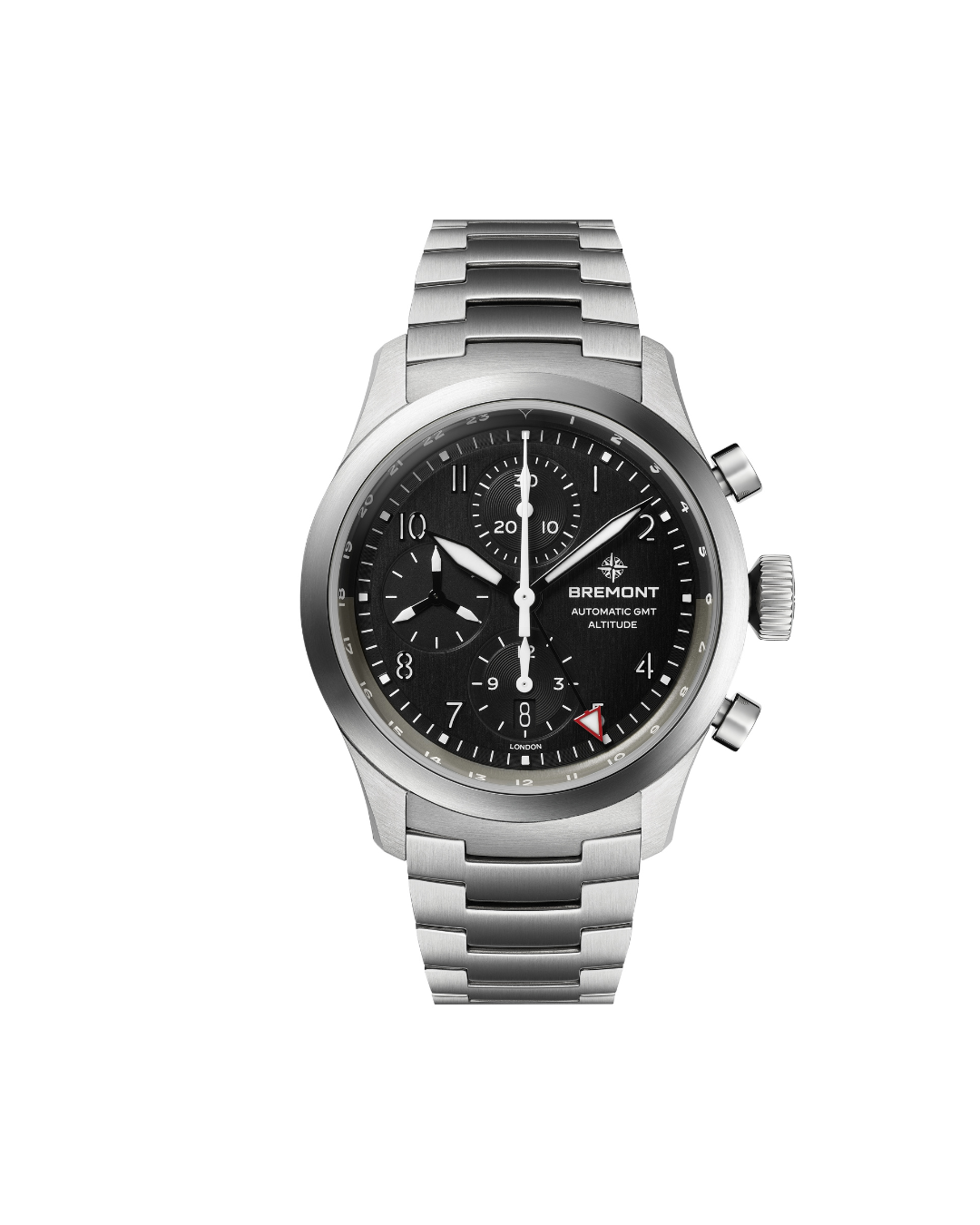
The very popular moonphase? I have a few and they are very pretty, but not useful enough to mention unless you have a phase and date timetable to set them by, along with a special pin to adjust them. The chronograph suggests “sporty person” ownership, but how many of those people actually set and use them? But the world timer I get, as someone who has occasionally phoned home to find I’ve got the wrong half of the 24-hour clock. Today, many brands are finding ingenious ways to make them user-friendly, adjusted quickly via the crown, and in a wider price range, so now the world timer is a standard model in comparatively moderately priced ranges.

There are several ways to show time differences. The “simplest” has an extra hand, often in a different colour, which you move forward or back to indicate the time at home, while the main hands show the time where you are. The best ones also indicate whether your home is in the day or at night. Some, like the Jaeger-LeCoultre classic, Reverso Tribute, have two dials working on one movement — not simple at all.

Next up is the GMT watch, with a 24-hour dial based on the Greenwich meridian at 12 o’clock. These often look sporty, reminiscent of a diving watch, with a rotating bezel to set the hours forward or back, with the “daylight” half of the bezel in a paler colour than the “night” half. These previously used to be an upmarket speciality, though smaller modern movements, lighter builds and micro-rotors have produced great mid-market examples, including Longines’ Spirit Zulu Time and Tudor’s Black Bay 58 GMT, both with 24-hour bi-directional bezels — the former newest in deep green, the latter in black and the brand’s new star colour, burgundy — and waterproof screw-down crowns.

TAG Heuer has revived the 1955-originated Twin Time, now part of its Carrera range, in a handsome teal green and white mix, with period-style numerals and a day-night 24-hour indicator bezel. The Bulgari Aluminium GMT X Fender, with its brown rubber bezel and Stratocaster-inspired dial, is the supercool option, while Bremont’s Altitude Chronograph GMT is a serious, military-style tool watch.

This worthwhile group was recently joined by German brand Nomos’s brilliant Club Sport Neomatik Worldtimer, with a modernised version of city airport codes, 24-hour indicator ring and the home time hand in a neat day-night subdial. The GMT mechanism, simply adjusted via a pusher, is integrated with the slim, in-house movement creating, at under 10 mm, one of the thinnest GMTs yet. With a sunburst dial in rich blue or midcentury inspired silver, plus limited edition, brighter colourways, this is a bargain at under £4,000, like the Bulgari and Longines, with the Tudor and TAG Heuer a shade higher, and the Bremont with its extra function under £6,000.

Most complex is the cities world timer, which often has a rotating outer ring, illustrated with names of cities or isolated islands in major oceans, one for each of the 24 time zones, and as artistically impressive as mechanically masterful.

Some come from grandes marques with almost a century’s experience with world timers yet their built-to-last classics are refined almost yearly. Rolex’s diver-style GMT-Master II is timeless and more obviously sporty, renewed this year with the brand’s first dial in ultra-durable Cerachrom alloy in dark green matched to the black and green bi-directional bezel, modern style plus a white gold case.
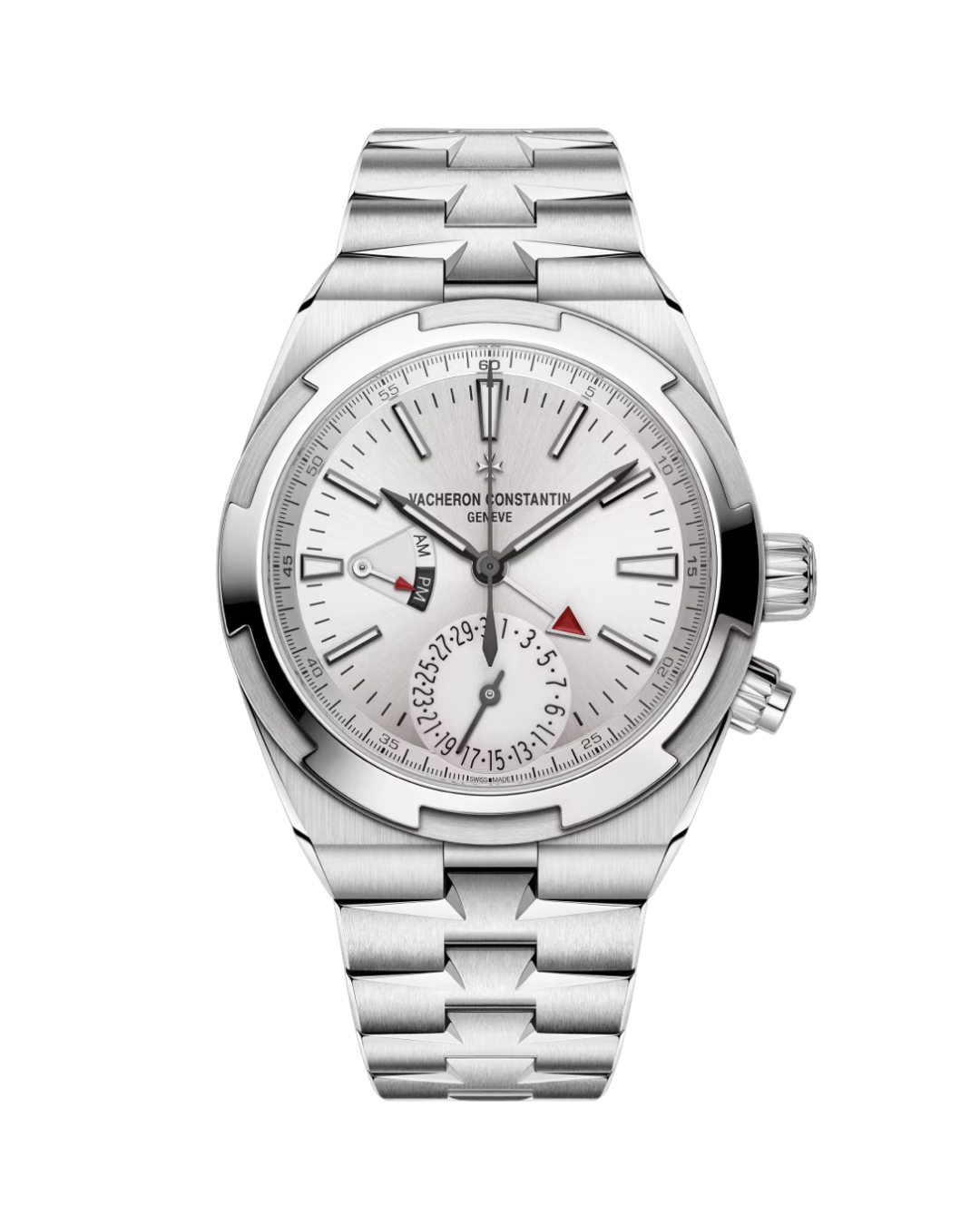
Vacheron Constantin’s modern Overseas Dual Time in stainless steel with silver dial and subtle red details is at home on sports field or boardroom, while on the re-imagined tradition of Hermès’ Le Temps Voyageur the local time dial wanders round the city ring while the home hours rotate through a window at 12. It comes in two sizes; the smaller (38 mm) includes a rose gold version featuring a mother-of-pearl dial, soft grey strap and diamond bezel. It’s less slender than some but plainly tilting adventurously at a female market.
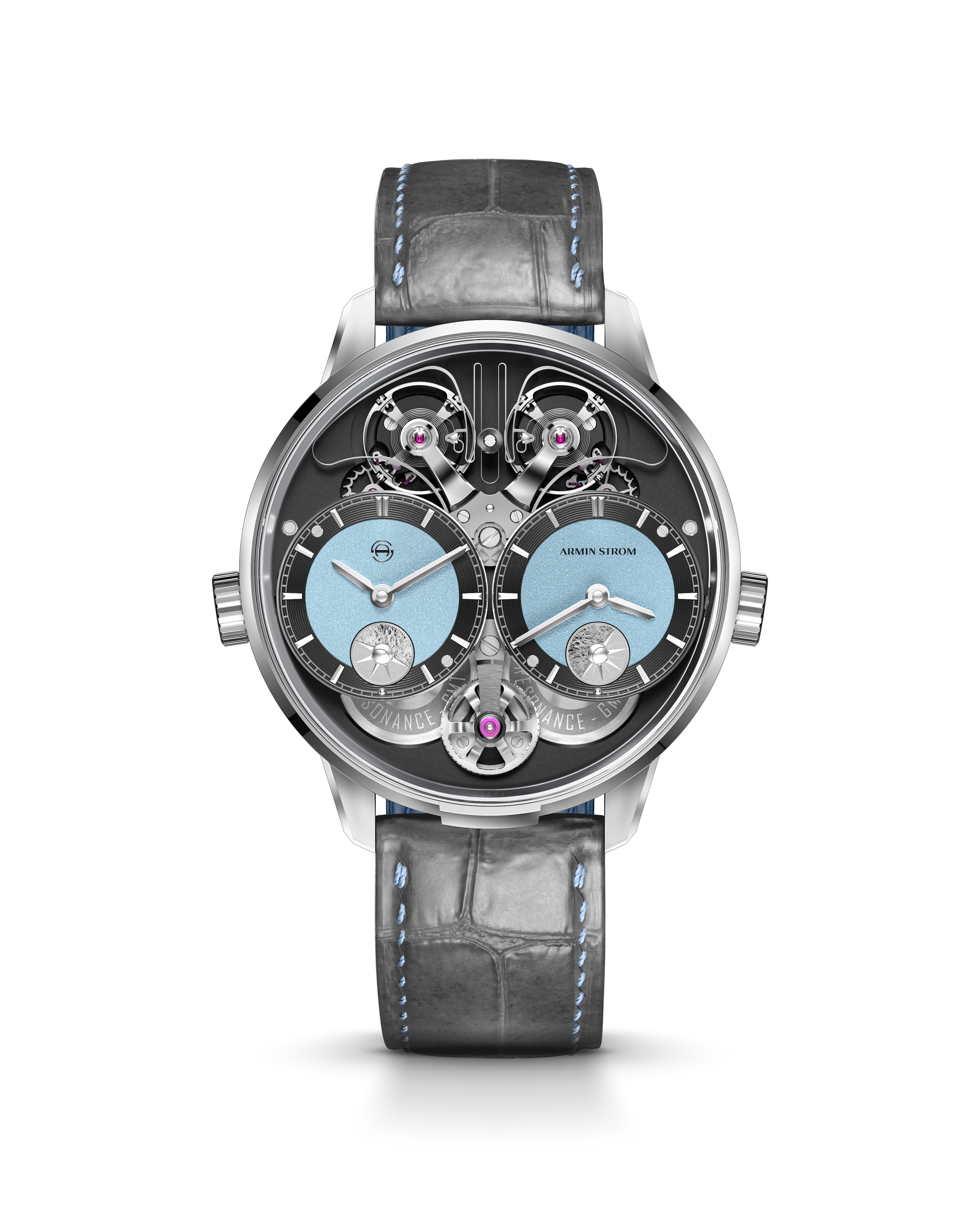
Top independent brands supply a wealth of innovation at a price, creating complex mechanisms and spectacular designs that are still simple to use. Armin Strom’s Dual Time GMT Resonance places side by side two identical but independently set dials with day-night indicators, showing home and away times at a glance, belying the complex movement. Minutes and hours on each dial are set separately, allowing for fractional hour differences.
Bovet’s astounding Récital 30 (titanium) addresses an old bugbear of world timers — their inability to calculate for daylight saving. Twenty-four tiny rollers, fanning out around the dial and each marked with a city name, can be rotated to show the time under the four regimes, covering about a third of the world’s countries. A smaller roller adjusts the chosen regime, while the guilloché centre features a 24-hour ring and day-night indicator. India is a growing market, and an arrow flash between the Maldives and Dhaka marks the half-hour time difference of Delhi. The Récital is derived from a larger, multi-functional model but packs 373 components into a 42 mm case, adjusted via the crown and two pushers.
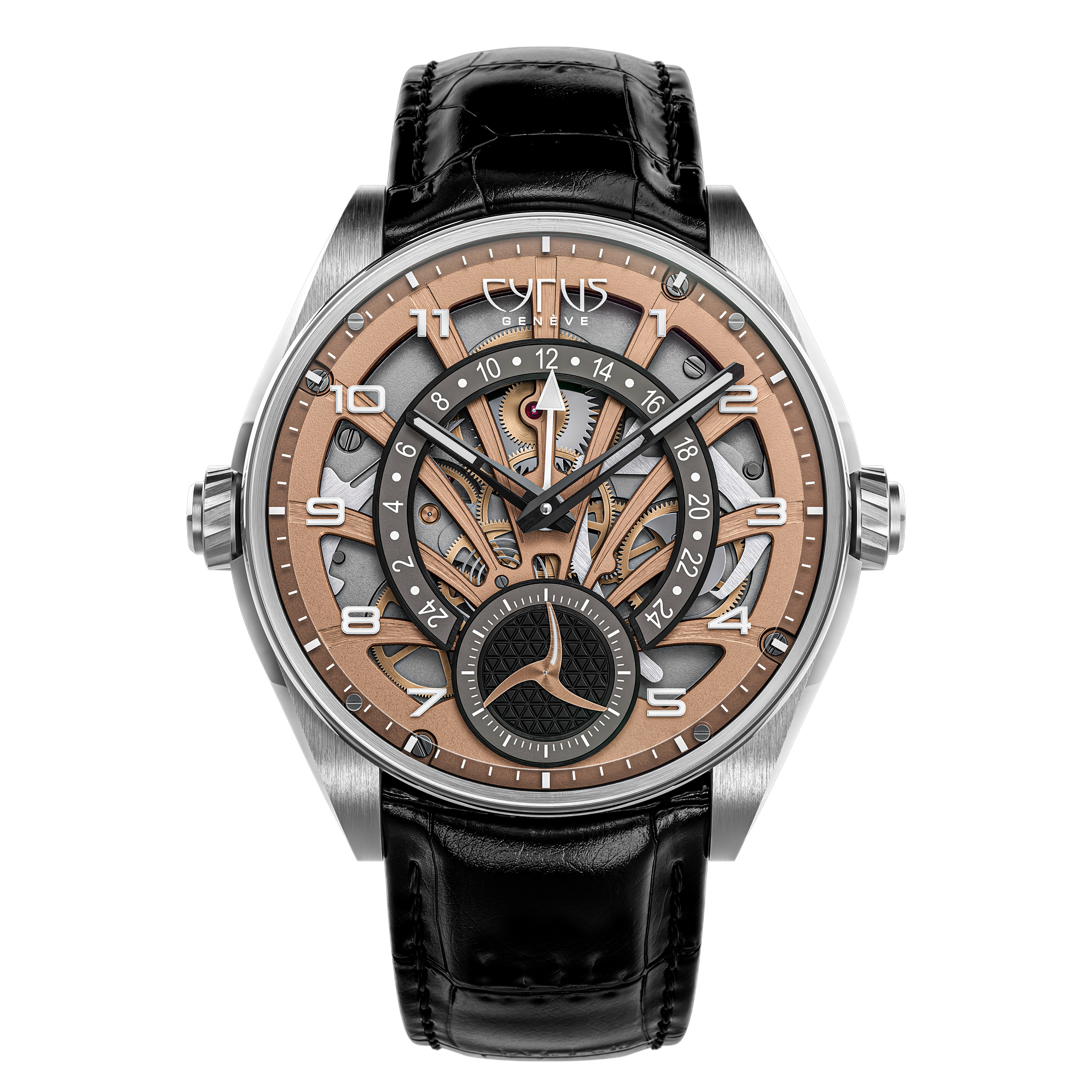
In contrast with this patrician style, Cyrus’s Dominion GMT is an avant-garde, slightly industrial-looking beast, but still only 42 mm. A standard 12-hour dial, adjusted from the crown, surrounds a smaller, retrograde, 24-hour dial for home time with simple, pusher adjustment. In Grade 5 titanium, its slender, radiating bridges have a rose gold galvanic treatment, creating an unexpected mix of brutalism and beauty. Very different from models with partial-display mechanics, Parmigiani’s steel Tonda PF GMT Rattrapante is the one you wouldn’t recognise.
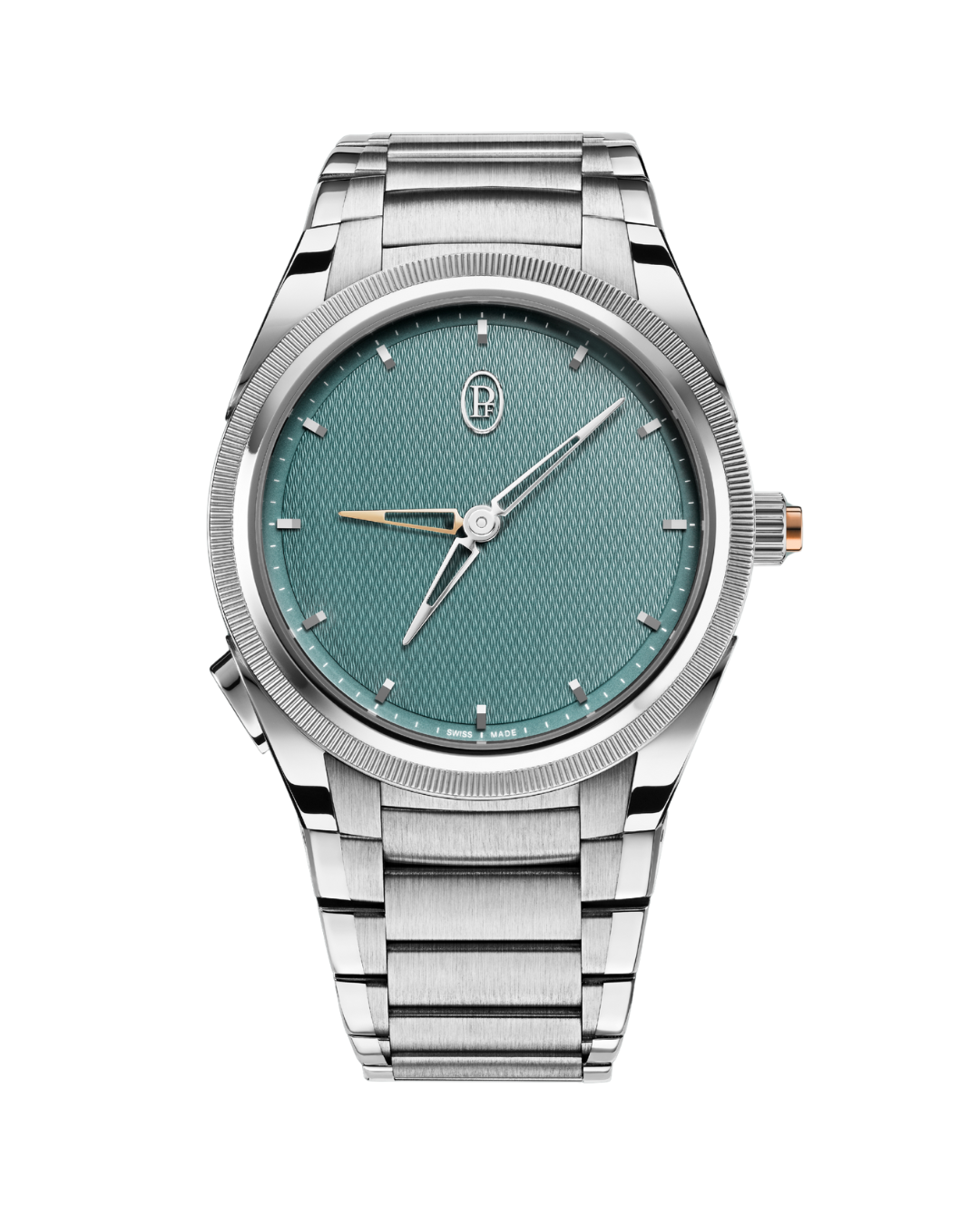
Calling it effortless is an understatement; the brand’s DNA is minimalist and movement complexities are mostly hidden. At first glance, this sleek beauty, with its guilloché dial in a soft, distinctly “Farrow and Ball” shade, looks like a normal two-hander with an openwork white gold hour hand. So it is, showing your local time, but a pusher pops out a rose gold hand, hitherto gliding in lock step underneath, to advance in hourly increments and mark home time, a unique mechanism. When you return home, pressing the rose gold centre of the crown stows it back to invisibility, a new and elegant way to define a second time zone.

Finally, a plea. The patriarchal past assumed that men travelled on business while women kept the home fires burning; a view that apparently persists despite all contrary evidence. The GMT still seems a “masculine” complication, partly because it can add bulk to the movement and depth to the case, but although that is changing, GMTs aimed at women remain rare. The template is Patek Philippe’s beautiful ref. 7130 in blue-grey and white gold or deep olive and rose gold, 36 mm and immensely subtle despite the wealth of information on its classic city ring, a centre of f ine guilloché and an unflashy diamond bezel.
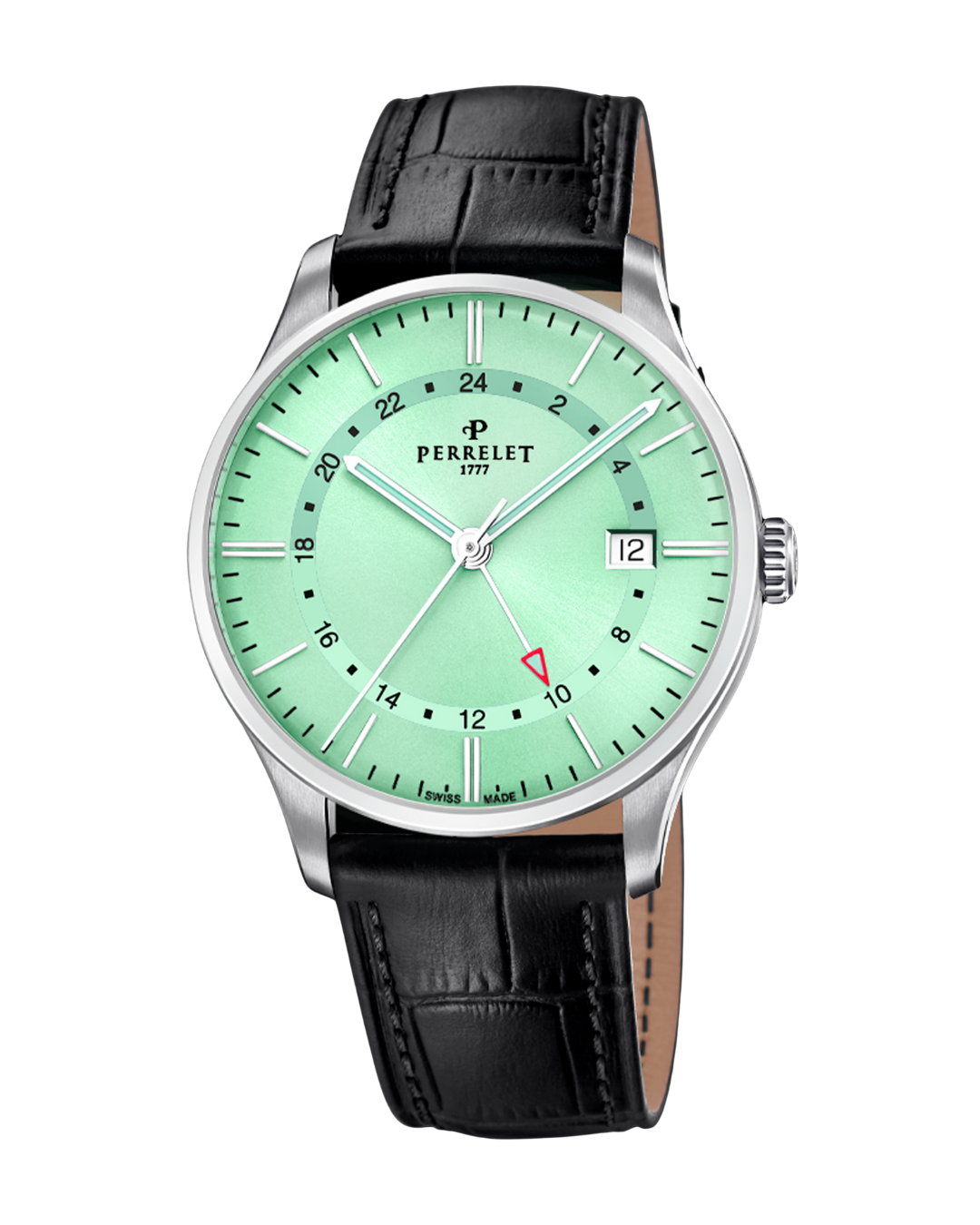
At the opposite level, Perrelet’s Weekend GMT includes feminine shades like ice blue, mint green and salmon, but at 39 mm, it is essentially non-gendered. In between is the Hermès, but as women now routinely wear watches up to 39–40 mm, some of the slimmer models mentioned, notably the Nomos or Parmigiani, would flatter a female wrist. But come on, watch brands. Next time you fly in business, observe the proportion of female professionals who could doubtless love and afford this useful complication.
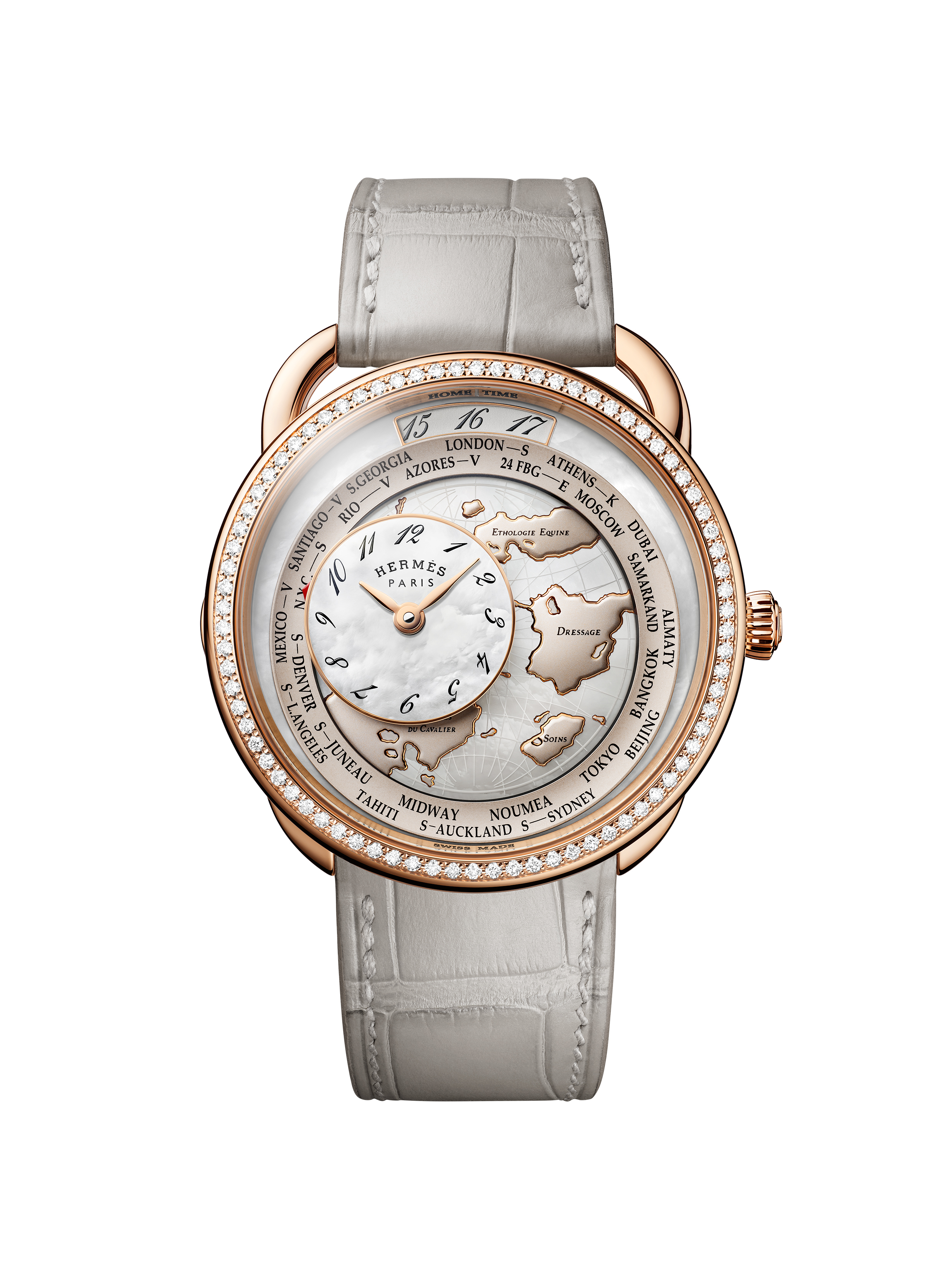
diamonds, automatic, £36,980.

